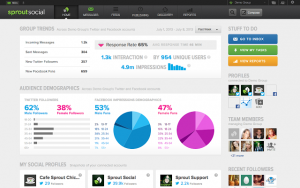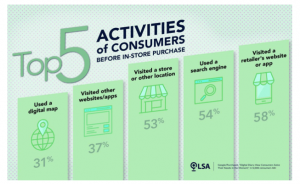A study by Content Marketing Institute indicates that B2B firms have an active presence on an average of seven platforms.
 © tashatuvango – za.Fotolia.com |
Going social has no doubt become a priority with most B2B marketers, and the goal is to implement highly effective social media campaigns that deliver a robust ROI.
There is no dearth of opinions and advice on B2B social media marketing. In my research, I came across several useful tips, but the ones that struck me as really valuable are discussed below. These six social media marketing lessons can help newbie marketers plan new campaigns and experienced marketers reassess current campaigns.
#1: Make your business more human
B2B doesn’t have to be all stiff upper-lip or impersonal, rather you should focus on making your company seem more human and establishing enduring relationships. It’s easy to understand why. When I am marketing to a business, I am interacting with people representing a brand. I am Jessica, the marketing manager talking to Sam, director of business development. If Sam and I share a rapport, the groundwork for marketing communications has been laid. Both brands have become more relatable and can be more spontaneous in their interactions on LinkedIn, Twitter and other social media channels.
#2: Present your most valuable selling points
In a typical B2B sales cycle, prospects seldom get a glimpse of your firm’s most compelling features early on. You can leverage social media sites to showcase valuable selling points to prospects much earlier in the sales cycles and give them an incentive to pursue a deal without sitting on it for a long time.
The Forbes report gives the example of Etratech Inc., which followed this approach successfully to meet its sales targets. The electronic manufacturing service provider marketed its manufacturing facility to prospects through YouTube video-based virtual tours. The result? Six to eight month sales cycles were reduced to as less as six to eight weeks.
#3 : Assess the B2B social media landscape to plan tactics
The social media placements that work for one B2B firm may not work for another. No one can be a better judge of where your content should go other than you. Following statistics that say Facebook is not such a good option for B2B marketing unquestioningly or devoting all your time to LinkedIn because it’s the most effective channel for B2B marketers, is a myopic approach. Yes, LinkedIn should definitely top your list of social media sites to be on, but you should also examine the potential of Facebook, Twitter, Pinterest, SlideShare and other networks in reaching out to prospects.
Figuring out which social media networks are a good fit for your business should be among the first critical decisions you take in developing a social media plan. See how Salesforce has built an active community on Facebook, Cisco has made an impact with its YouTube videos, and HubSpot is engaging audiences on Twitter.
#4: Be open to collaboration for better customer experiences
Facebook Connect and Google’s OpenSocial are two examples of co-operation and collaboration with others in the industry to deliver enhanced customer experiences. The two social networking giants have used these projects to move their data across the web and around networks. It has benefited them by driving more activity to their websites.
Explore ways to join forces with competitors on the social web for mutual benefits, and with a focus on customer needs. It is an excellent way of showing customers that they come first.
#5: Define your performance metrics
To understand how exactly your social media efforts are paying off, and use this data to inform your new campaigns, define your performance metrics. In fact, metrics and goals go hand-in-hand – unless you know the results of your efforts, there is no way of understanding whether you’ve met your short-term or long-term social media goals!
The simplest metrics include number of fans and followers and the shares and likes your content receives. Website traffic trickling in from your FB business page or LinkedIn page, and click-through rates are other volume-based metrics. These metrics tell you what content has worked better than others and provide further insights into your target market. Then there are key metrics that have a direct impact on your bottom line. These include leads generated by your social media campaign, conversion rates and customer retention rates.
#6: Integrate offline and online engagement
You can use social media as a buffer between your first contact with a prospect at a networking or Chamber of Commerce event and the ideal time for proposing a business deal. Prospects’ social media profiles also allow you to understand them better and inform your online as well as offline marketing communications.
Have a social media lesson or tip to share? Who, in your opinion, are the most social brands online?
Read more on Bizcommunity.com
(535)







